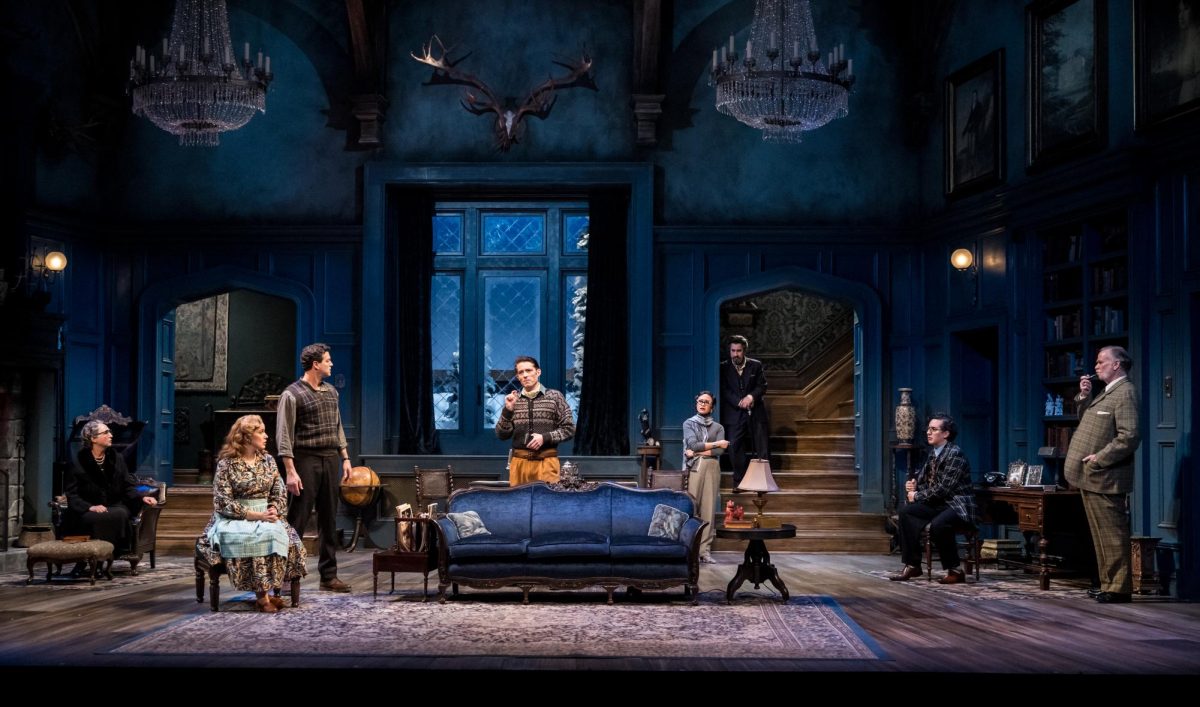As hobbies go, knitting rarely brings to mind young people and a hip, pop-culture moment.
Knitting and crocheting have exploded across the country, and, surprisingly, the trend is especially popular with university students. Some of these young knitters learned their craft years ago from mothers and grandmothers; others have only a few months of experience.
One striking facet of this new vogue for fiber arts is the prevalence of men within the ranks of new enthusiasts.
Brian Rhett, a genetics junior, learned to crochet from his fourth-grade teacher and has stuck with it, albeit secretly at first, he said.
He’s working on an enormous maroon-and-gold afghan, and he said he’s become famous for crocheting in the TV lounge of his residence hall.
“The guys give me hell for it,” he said. “The girls do too, but they’re right there (crocheting) with me.”
Rhett isn’t alone as a man making his way in a predominantly female craft.
Several members of a University fraternity learned the ropes of knitting last semester.
Charlie Smithson said that his grandmother taught him how to knit his first year of high school. He said he has made hats and scarves for himself and given them as presents. Once he taught his roommate, the fever spread. Each of them taught a few others, and those apprentices became masters and taught more, he said.
Although male knitters might stand out a little more, there are plenty of female University students among the growing population of knitters and crocheters as well.
First-year student Elsabeth Oakley said she learned how to knit and crochet from her mother and grandmother.
“I love the whole process,” she said. “I love looking at patterns, picking out yarns and needles, doing all the knitting just right and wearing, using or giving away the finished, knitted object.”
Oakley’s years of experience provide her with unlimited creative options.
“I’ve made scarves, hats, mittens, gloves, bear dolls, a lace bookmark, socks, and I’m working on a sweater and a bikini top. I especially like making mittens and gloves, because I’ve made them often enough now that I know how to change (the patterns) to make it fit perfectly,” she said.
But knitters and crocheters know their craft, like everything else, takes practice.
First-year student Eddie Glenn reached into the back of his closet and pulled out a rolled-up scarf.
“You see this? Nobody would ever buy this, which proves I made it,” he said as he unfurled a two-tone knitted scarf like a scribe unfurls a scroll.
Not to be outdone, Michael Sakariassen described his progress from novice to advanced knitter.
“My first scarf was about 10 feet long,” he said with a grin. “I had to wrap it around my neck four times so I wouldn’t trip.”
But Sakariassen said he wasn’t deterred, and his next project turned out much better.
“I made a baby-blue scarf for my sister, and she thought I bought it for her. I had to convince her that I made it myself,” he said.
New knitters need to know a few basics when they’re starting out, such as the difference between knitting and crocheting. Knitting involves two needles that look like pencils and vary from short and thin to long and thick. Crocheting uses one hook, and the same idea for thickness applies. The thicker the needle or hook, the larger the finished stitch.
“They’re two different styles, techniques and finished looks,” said Catherine Mandle, Bell Museum of Natural History visitor services coordinator. “The yarn is pretty much the only thing that stays the same.”
Mandle, wearing a sweater that took her approximately one month to make, and three other women sit on bean bag chairs in a corner of the museum’s Touch and See Room, surrounded by exhibits. Like members of many University departments, the museum’s employees have an unofficial knitting club.
Mandle learned to knit approximately three years ago and said she enjoys looking at knitted creations in stores and comparing them to her own work.
“I look at how much it costs and then say, ‘I can make that!’ ” she said.
Nancy Benson, an employee at Depth of Field Yarn, a yarn and futon store on the West Bank, said she has noticed the growth in college-age crafters.
“There have always been some, but we’ve seen a huge increase this last season,” she said.
Benson said some people come in for help with picking out projects and yarn, and the more-experienced ones come in for new patterns.
“There are a lot more patterns out there for these kids now, like halter tops, bikinis and hats,” Benson said.
Most new crafters who come to the store start with simple projects such as scarves and baby blankets.
“Scarves are very easy and cheap to make, since one scarf only requires one or two skeins of yarn,” Benson said.
Whether man or woman, student or employee, with hooks or with needles, this trend might be around for a while.







